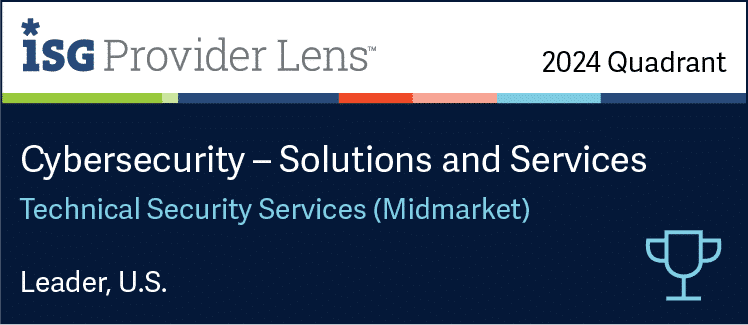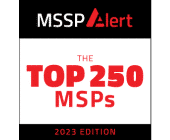
MOVE ON FROM LEGACY SECURITY
Migrate smoothly to cloud-native security
Keep your organization prepared for anything the future holds with fast, easily scalable, and cost-effective cloud-native security.

Cloud transformation is not as simple as it should be
Migrating your infrastructure and workloads to the cloud gives your enterprise an incredible amount of flexibility – enabling you to adapt and scale at the speed of business.
But at the same time, cloud migration opens you up to new attack surfaces and new challenges, including:
- Maintaining visibility of on-prem. activity as you start monitoring cloud activity.
- Ensuring the right security logs are collected for analysis and correlation.
- Reducing the costs of ingesting and storing ever-expanding volumes of cloud data.
- Adapting threat detection rules and response processes to fit new cloud threat use cases.

Handling the intricacies of cloud-native security
Despite the challenges, there are some proactive steps your enterprise can take to stay protected during your migration to the cloud. These include:
Using cloud-native, not cloud-based, security analytics.
Cloud-based and cloud-native security analytics are not the same. Cloud-based analytics are migrations from on-prem. solutions that are stored in the cloud, but still require processed data to be sent back to a private, on-prem data center.
But cloud-native solutions like Microsoft Sentinel analyze large volumes of data and store them in the cloud without deploying new infrastructure—keeping your costs down and improving the speed and scalability of your threat detection processes.
Optimizing data collection to reduce costs and speed up threat detection.
As you move to the cloud your enterprise will ingest ever-increasing volumes of data across an ever-increasing range of data sources – meaning you need custom data connectors, not out-of-the-box SIEM solutions, to monitor all your data sources across all your on-prem. and cloud environments.
At the same time, to keep your data costs under control, your data needs to be parsed, filtered, and tagged at the same time it’s ingested. This way, only use case-driven data is routed into your SIEM.
Introducing agile development of use case content.
It’s hard to keep track of threat coverage gaps as you transition. Which is why you need to put in processes to continuously prioritize, develop, and refine new use case content so you can be proactive, not just reactive, at detecting threats.
The use case content should cover everything from detection rules and playbooks to hunting queries, integrations, automations, and reporting to ensure you have full coverage on all fronts.
Leveraging native Extended Detection & Response (XDR).
Wherever you can, your enterprise should harness XDR capabilities that can be integrated from the same cloud-native SIEM provider. This ensures you don’t need to waste resources managing multiple tools, each with their own platform or reporting system.
CyberProof natively integrates the CDC platform with Microsoft Sentinel and 365 Defender suite to give you a centralized platform for managing incidents across your on-prem. and cloud environments.
HOW WE CAN HELP YOU
Future-proof your cloud-native
security with CyberProof
At CyberProof, we support global enterprises as they transition from legacy and on-prem. to cloud-native cybersecurity defenses, and beyond. Using a unique combination of security engineering and operational capabilities, we help your organization stay secure as you modernize your infrastructure and environments. With CyberProof you can:
Gain visibility of all activity without losing coverage.
Our Infrastructure as Code (IaC) transition model enables you to migrate securely and swiftly by involving automated deployment of Microsoft Sentinel infrastructure and use case content. In addition, we deploy our cloud-native CyberProof Defense Center (CDC) platform, which acts as a single pane of glass for all alerts from multiple SIEMs and other security tools.
This gives you full visibility of your on-prem. and cloud activity as you transition without losing coverage or your security posture on either front.

Migrate, define, and refine threat use cases continuously.
To ensure you have full coverage across your unique environment, we first establish your threat landscape to get a baseline for your existing use cases. We then supplement this with relevant content – such as detection rules, playbooks, hunting queries, integrations, and automations – to fill any remaining gaps in your security coverage.
We then put firm processes into place to continuously develop, test, and deploy new use case content to keep your enterprise protected against the ever-changing threat landscape.

Optimize your ongoing data ingestion and collection costs.
Data costs can skyrocket out of control when transitioning to the cloud. This is why CyberProof parses, filters, and tags security event data as it’s collected – immediately sending higher-value data to your cloud-native threat detection systems while routing lower-value data to easily-searchable, long-term cloud storage.
This significantly reduces your data ingestion costs and speeds up your threat detection abilities, while ensuring you still have easy access to relevant data for regulatory requirements.


CASE STUDY
Enterprise distributor migrates to the cloud
Learn how we helped an industrial supplies distributor stay secure as they migrated to the cloud.
WHY CYBERPROOF
Supporting global enterprises as they migrate to the cloud
CyberProof, a UST company, is an advanced Managed Detection & Response provider, enabling global enterprises to stay protected as they transition to the cloud and beyond.
Using an innovative combination of virtual analysts, expert human analysts, and automations in a co-sourced engagement model, CyberProof enables you to anticipate, adapt, and respond to cyber threats with full transparency in an increasingly connected world. Our mission is to allow you to exceed your business goals without the fear of cyber-attacks.
RECOGNIZED AS INDUSTRY LEADERS

Get a customized cloud transition and transformation analysis
Learn how our CyberProof workshop helps enterprises mitigate risk
































